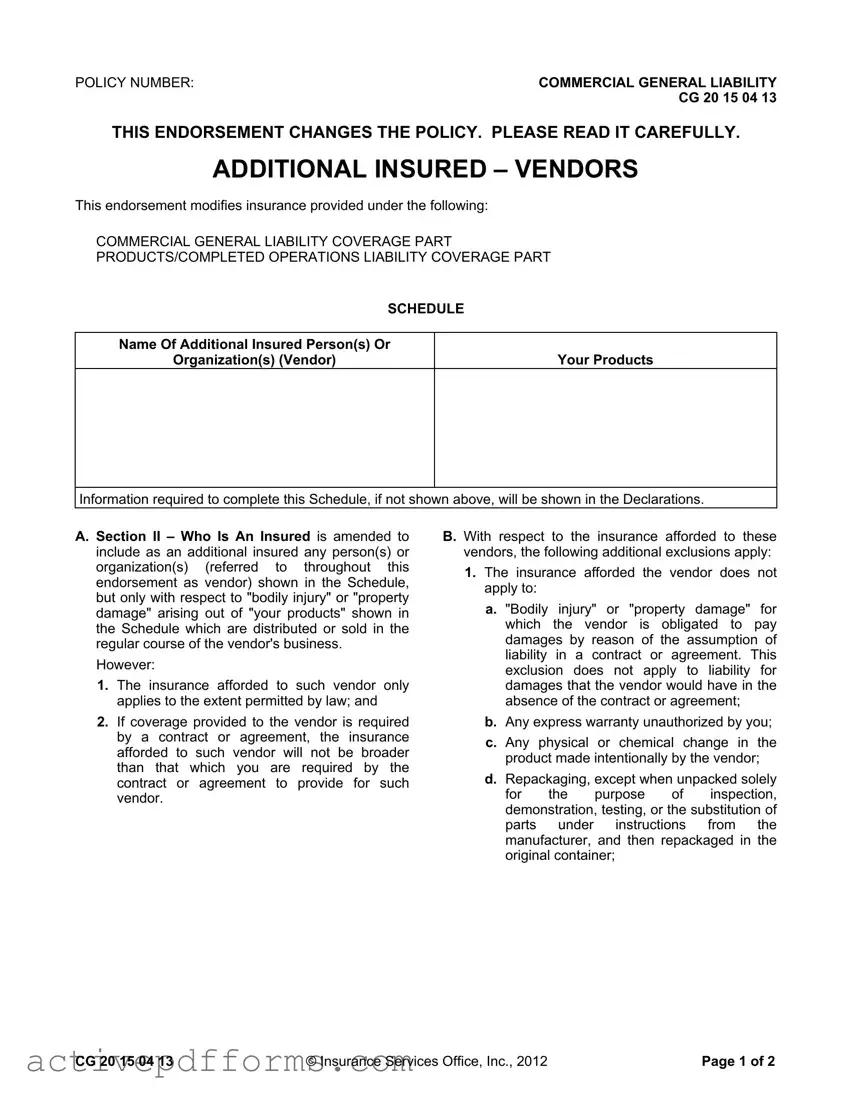In the world of commercial transactions, managing risk and distributing liabilities are paramount concerns for businesses large and small. At the heart of these considerations lies the Additional Insured Vendors form, formally known as CG 20 15 04 13, a crucial document underpinning the Commercial General Liability policies. This endorsement, by extending coverage to vendors, fundamentally alters the standard liability insurance framework, modifying whom insurance considers as an insured entity in relation to specific products sold or distributed. Specifically, it covers bodily injury or property damage arising from the products that a vendor sells or distributes, thereby delicately balancing the responsibility between manufacturers and vendors. Nevertheless, the breadth of this coverage is tethered closely to legal permissions and contractually obligated limits, ensuring that the insurance does not overreach beyond agreed parameters. Exclusions carve out significant territories where this endorsement does not apply, such as liabilities assumed under contract beyond those imperatives in the absence of such agreements, unauthorized warranties, and certain acts of modification or repackaging by the vendor, highlighting the nuanced dance between coverage and caveat. Furthermore, limitations assert that the available insurance will not exceed the lesser of the requirement established by contract or the policy's own stated limits, ensuring that the endorsement bolsters protection without inadvertently expanding it beyond sustainable boundaries. This balance aims to protect vendors within the scope of their usual business activities while safeguarding insurance carriers and policyholders from unforeseen extensions of liability. The Additional Insured Vendors form, thereby, stands as a testament to the complexities and necessities of modern insurance practices, offering a nuanced mechanism for distributing risk in the commercial landscape.

